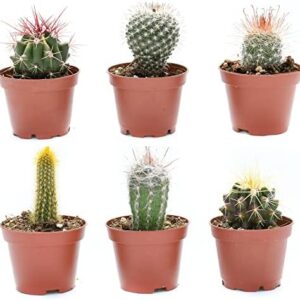So you’ve taken the leap into the world of plant parenthood and now you find yourself surrounded by lush greenery in every corner of your home. But as your collection grows, you may be wondering how you can expand it even further without breaking the bank. Well, look no further than propagation stations – the secret weapon of every plant enthusiast.
Propagation is the process of creating new plants from existing ones, and it’s easier than you think. All you need are a few basic supplies and a little bit of patience, and before you know it, you’ll have a whole new batch of plants to add to your collection. So grab your shears and let’s get started!
The first step in propagation is choosing the right plant cuttings to work with. While you can technically propagate any plant that has nodes (those little bumps where leaves and branches sprout from the stem), some plants are easier to propagate than others. Good candidates for propagation include pothos, snake plants, succulents, and spider plants. These plants are hardy and tend to root quickly, making them perfect for beginners.
Once you’ve chosen your plant cuttings, it’s time to prepare them for propagation. Using a clean pair of shears, snip off a healthy stem just below a node. Make sure your cutting is about 4-6 inches long and has at least a few leaves attached. Remove any lower leaves that will be submerged in water or soil, as these can rot and cause your cutting to fail.
Now that you have your cuttings prepped, it’s time to decide how you want to propagate them. There are two main methods of propagation: water propagation and soil propagation. Water propagation involves placing your cuttings in a container of water and allowing them to grow roots before transferring them to soil. Soil propagation, on the other hand, involves planting your cuttings directly into soil and keeping them moist until roots form.
Water propagation is a great option for beginners, as it allows you to easily monitor the progress of your cuttings. Simply place your cuttings in a glass or jar of water, making sure that the nodes are submerged but the leaves are above the waterline. Place your container in a location with bright, indirect light and change the water every few days to keep it fresh.
Soil propagation is a bit more hands-on, but it can be a faster method of propagation for some plants. To propagate your cuttings in soil, fill a small pot with a well-draining potting mix and plant your cuttings about an inch deep. Keep the soil moist but not waterlogged, and place your pot in a warm, bright location to encourage root growth.
No matter which method you choose, the key to successful propagation is patience. It can take anywhere from a few weeks to a few months for your cuttings to grow roots, so don’t get discouraged if you don’t see progress right away. And remember, not every cutting will root successfully, so it’s always a good idea to take multiple cuttings to increase your chances of success.
Once your cuttings have grown roots, it’s time to transfer them to their own pots and watch them flourish. Be sure to plant your new plants in a well-draining potting mix and water them regularly to keep the soil moist but not waterlogged. As your plants grow, you can gradually reduce the frequency of watering and fertilize them with a balanced plant food to encourage healthy growth.
Propagation stations are a great way to expand your plant collection without spending a fortune on new plants. By taking a few simple steps, you can create a whole new batch of plants from your existing collection and watch them thrive in their new homes. So why not give propagation a try and see just how rewarding it can be to watch your plants grow from cuttings? You’ll be amazed at how quickly your collection can multiply with just a little bit of time and effort.






